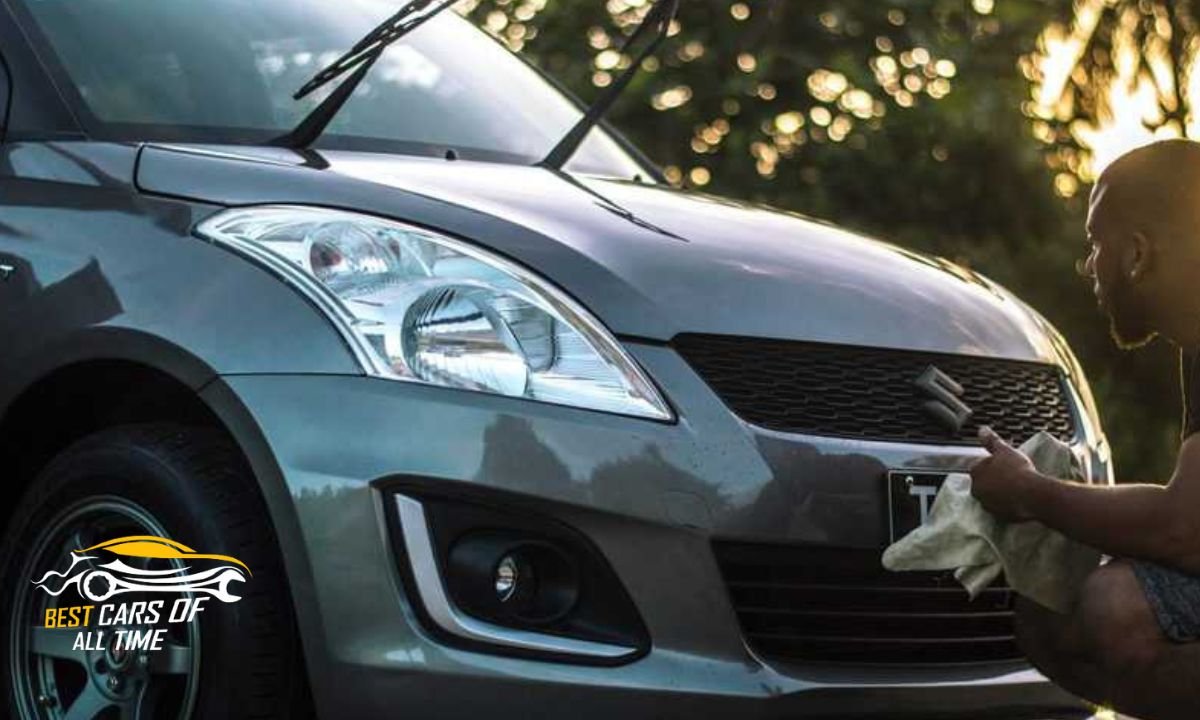The car bumper is an essential component of a vehicle, serving as a protective barrier between the vehicle’s body and the road. It plays a crucial role in vehicle safety by absorbing impact and minimizing damage during collisions.
However, it is not uncommon for car bumpers to come loose or even fall off due to various reasons. In this article, we will provide a step-by-step guide on how to fix a car bumper that is falling off, ensuring your safety and the proper functioning of your vehicle.
What Can Cause a Bumper to Fall Off?
Most automobiles’ bumpers are not visible from the outside; the plastic we see is known as the bumper cover, and it protects all of the elements that protect us.
Underneath this is a metal frame with shock absorbers, which are responsible for minimising your injuries.
This is a relatively simple component of your vehicle, but it has numerous little parts that can break. These are some of the possible causes of your bumper falling off:
Impact from a collision or accident: A significant collision can damage the bumper attachments or the bumper itself, causing it to detach from the vehicle.
Wear and tear over time: Continuous exposure to harsh weather conditions, road debris, and general wear and tear can weaken the bumper’s attachment points, leading to loosening or detachment.
Improper installation or damage to fasteners: If the bumper was not installed correctly or the fasteners that hold it in place are damaged, the bumper may become loose or fall off.
How to Fix a Car Bumper Falling Off?
Follow these steps to fix a car bumper that is falling off:
Safety first
Park your car on a flat surface and engage the parking brake to ensure stability during the repair process. Put on safety gloves and eyewear to protect yourself.
Assess the damage
Examine the bumper and its attachment points to determine the extent of the damage. Identify any broken or missing fasteners, brackets, or clips.
Remove the bumper
If the bumper is partially attached, carefully remove it by unscrewing or unclipping the fasteners. Start from the corners and work your way towards the center.
Inspect the bumper and attachments
Examine the bumper for any cracks, dents, or other damage. Check the attachment points on both the bumper and the vehicle for signs of wear or breakage.
Repair or replace damaged components
If the bumper is damaged, you can attempt to repair it using appropriate methods and materials. For extensive damage, consider replacing the bumper or specific components.
Replacement the bumper
Align the bumper with the attachment points on the vehicle. Install new fasteners or replace any damaged ones. Start from the centre and work your way towards the corners, ensuring a secure fit.
Bumper replacement is more difficult than repairs. The cables for your fog and reverse lights are normally housed here (depending on whether it is your front or back bumper), so be careful when disassembling it.
But that doesn’t rule out the possibility:
Step 1
Remove the screws that keep the bumper cover in place by opening the hood.
Step 2
Remove the lid by prying open the clamps using a flathead screwdriver.
Step 3
For easier access, use a body board and remove all of the bolts holding the bumper in place under the vehicle. Take off the old bumper.
Step 4
The new bumper was installed on the front of the vehicle.
Step 5
Replace the nuts and bolts you removed earlier to properly fasten the bumper. As a result of step 2, you will require new clips to hold the bumper cover in place.
Step 6
Replace the bumper cover and attach the clips as needed. Reinstall the screws under the hood to ensure optimum security.
Test the bumper
Give the bumper a gentle tug to ensure it is firmly in place. Check for any remaining looseness or instability.
What are the Preventive Maintenance Measures?
When it comes to getting around, your vehicle is your best friend. As a result, providing it the attention it requires has a direct impact on your personal safety and comfort. Consider being late for work or school because your car’s battery has died. That’s awful, isn’t it? To avoid these types of incidents, you must inspect your vehicle on a regular basis.
Vehicle preventive maintenance should be kept up with whether it’s a short or long distance journey, an old or new automobile, a sedan or a truck, or even thinking about transporting your vehicle to another state.
Preventive maintenance includes examining your vehicle, scheduling services, vehicle repairs, and any other type of maintenance that prevents problems and extends the life of the vehicle. Lubrication, testing, adjustment, repair, cleaning, and part replacement are examples of these functions. These actions should be carried out on a regular basis in order to extend the life of the vehicle, prevent mechanical failure, and adhere to transportation rules and regulations.
To prevent future issues with your car bumper, follow these preventive maintenance measures:
Avoid collisions and drive defensively
Be mindful of your surroundings, maintain a safe distance from other vehicles, and practice defensive driving techniques to minimize the risk of accidents.
Regularly inspect the bumper for signs of damage or loose parts:
Perform visual inspections of your bumper to identify any cracks, dents, or loose attachments. Address any issues promptly.
Offer maintenance tips for keeping the car bumper in good condition: Clean the bumper regularly to remove dirt and debris that could lead to corrosion. Apply protective coatings or wax to minimize wear and tear from exposure to the elements.
Frequently Asks Questions (FAQs):
Why does my bumper keep falling off?
There could be various reasons, including impact damage, wear and tear, or improper installation. It’s essential to assess and address the underlying cause.
Can you reattach a car bumper?
In most cases, it is possible to reattach a car bumper. However, the feasibility depends on the extent of the damage and the availability of necessary parts. If the bumper and its attachment points are still in good condition, you can follow the step-by-step guide provided earlier to reattach the bumper securely.
What happens if your bumper comes off?
If your bumper comes off while driving, it can pose a safety hazard to you and other motorists. The bumper not only protects your vehicle but also helps absorb impact during collisions. Without a bumper, your vehicle is more vulnerable to damage in the event of an accident.
Can I drive with a loose bumper?
It is not recommended to drive with a loose bumper. A loose bumper can potentially detach completely while driving, leading to hazards on the road and causing damage to your vehicle or other vehicles. It is best to address the issue before driving your car.
Can I drive with my front bumper off?
It is not safe to drive with the front bumper off. The front bumper provides crucial protection for your vehicle’s vital components, such as the engine, radiator, and headlights. Without a front bumper, these components are more susceptible to damage in case of a collision.
Bottom Line
Fixing a car bumper that is falling off is essential for your safety and the proper functioning of your vehicle. By following the step-by-step guide provided in this article, you can reattach the bumper securely or take appropriate steps to repair or replace damaged components.
Remember to prioritise safety, perform regular inspections, and follow preventive maintenance measures to avoid future bumper issues. If you are unsure or uncomfortable with performing the repairs yourself, it is advisable to seek professional help from a qualified mechanic or auto body shop.




